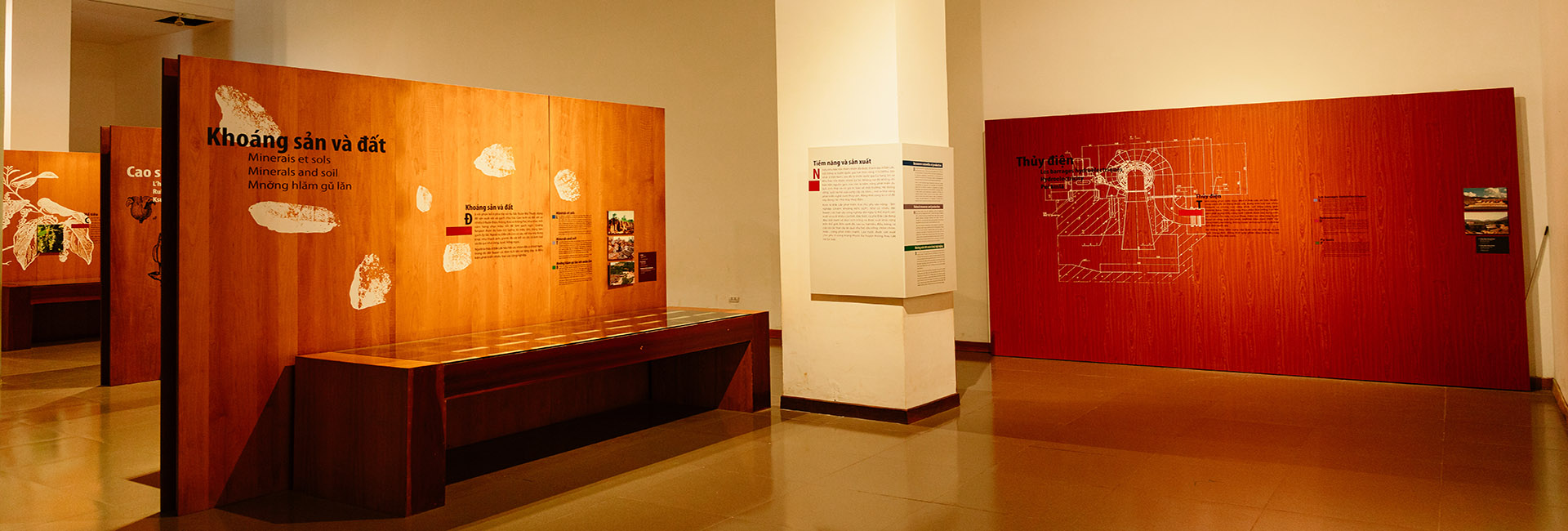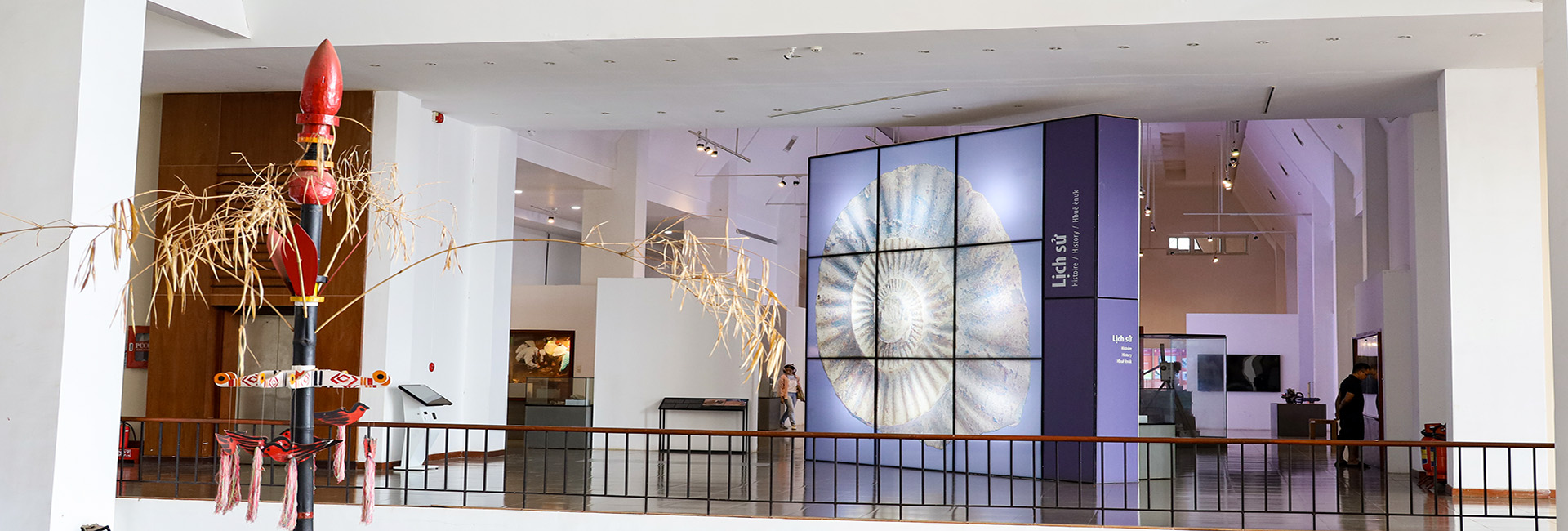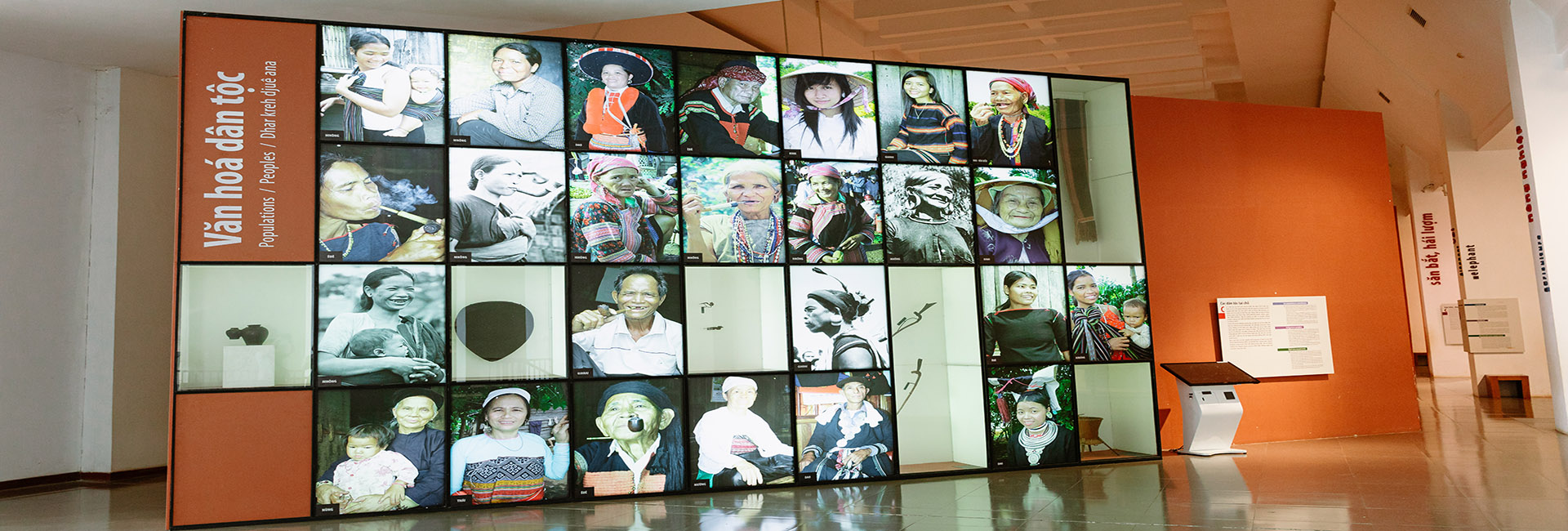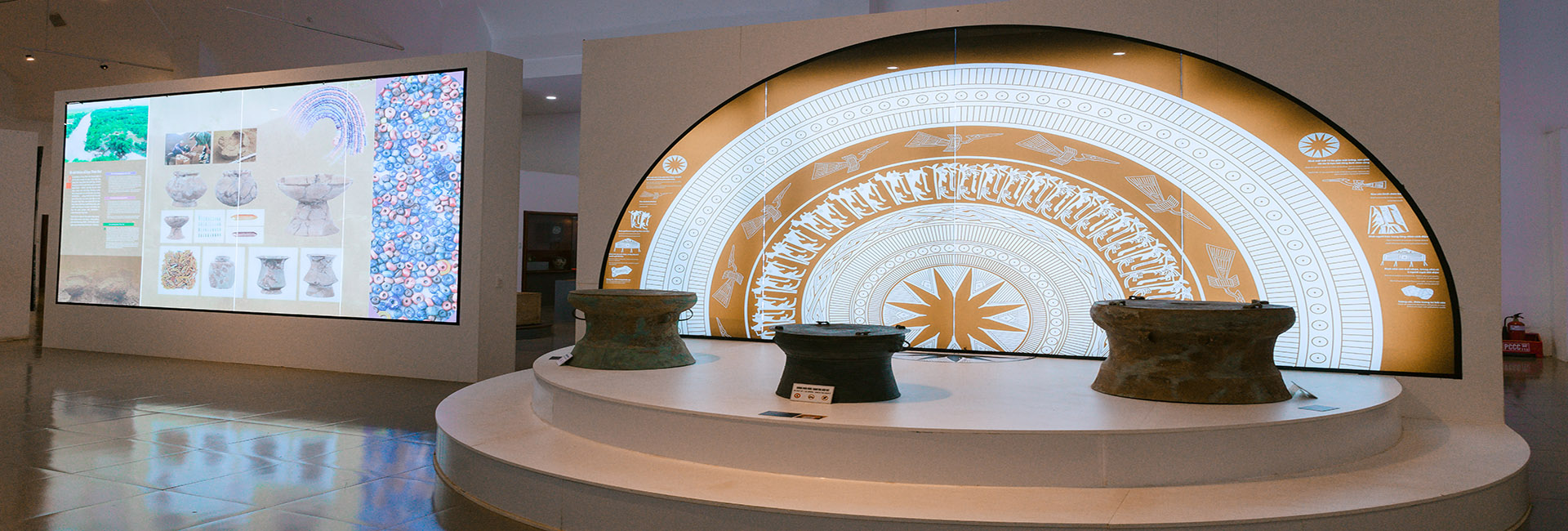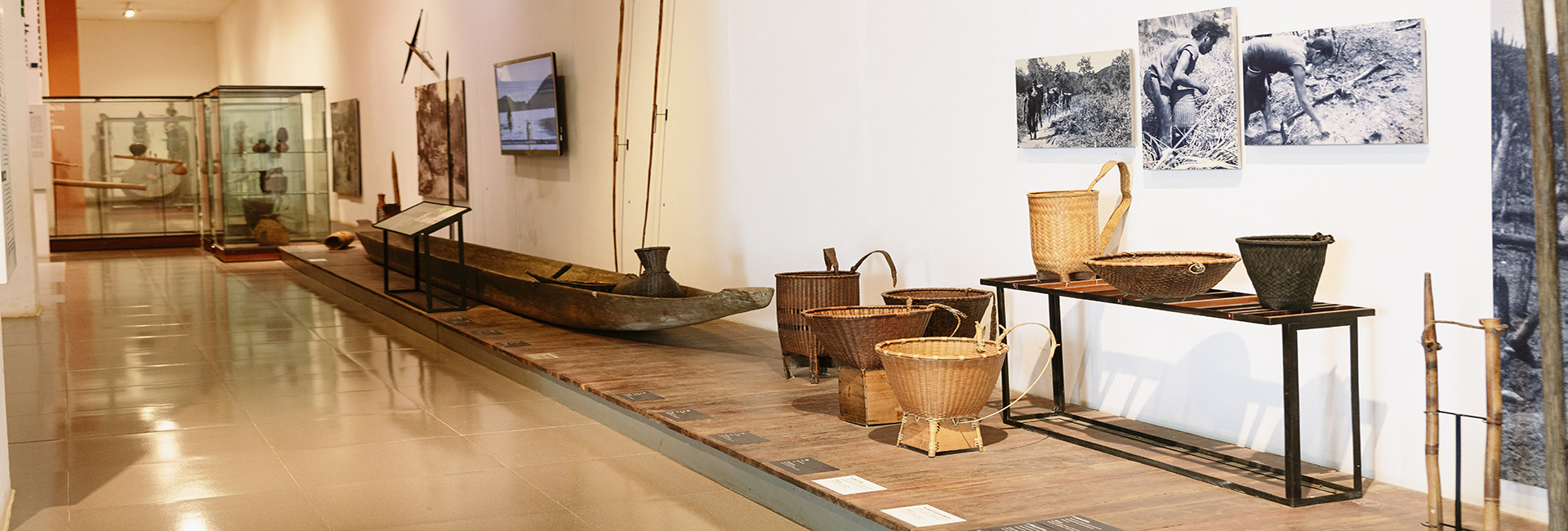THE H’GOR, THE EDE’S MALE DRUM
The H’gor, the Ede’s male drum is made from a tree trunk, with its two surfaces covered with buffalo skin. The drum placed on a K’pan bench in the living room of the long stilt house is often played accompanying with a set of gongs.

Studying and exchanging information about the Ede’s male drum displayed at Dak Lak Museum
After going into the forest to choose a big straight stiff tree, the Ede hold a ceremony to ask the gods and ancestors for permission to cut the tree to make a drum. The cut-down tree is divided into sections with sizes suitable to their wish. The drum makers use axes to carve the bark cleanly; the middle log section is remained intact, the two ends are carved smaller than the drum body; the inside of the tree trunk is hollowed out until it reaches the required thickness. After carving the drum body, the makers continue to use a bundle of thatch to heat and burn inside. This step requires meticulousness and care because it affects the drum’s sound quality later.

H'gor drum displayed in the long stilt house at Dak Lak Museum
The drum made continuously for many days until it is completed. However, when night falls, the drum makers rest and take turns to guard the drum. The guard must regularly beat the drum body in order to chase away evil spirits to avoid harming the drum owner.
The Ede’s drum is special with two drum surfaces covered with the skin of male and female buffalo, which calculated precisely so that the skin to advoid too short or too much excess. Before being used, the buffalo skin is carefully processed, not too dry so that when stretched it is still flexible but also not wet causing easily shrink the drum surface.
To fasten the buffalo skin to the log when covering the two drum surfaces, the Ede drive nails, sharpened from old bamboo roots, evenly into the drum body at both ends and in the middle, forming evenly spaced nail circles. Once the buffalo skin has been stretched and fixed on the drum surface, the maker uses a sharp knife to cut off all the excess skin, shave off the hair on the drum surface, but keep intact hair on the drum body; the drum will be tuned after completion.
Through the number of drums displayed and preserved at Dak Lak Museum, it shows that: On both drum surface, there is a small round hole with a diameter of about 5 - 6mm, this small hole is punched during the sound adjustment process, helping to circulate air inside the drum.

Small holes with a diameter of about 5 - 6mm are punched during the sound adjustment process, helping to circulate air inside the drum.
After the drum is completed in the forest, the Ede carry out a ceremony to bring the drum home. Then, the drum is placed on the K’pan chair in the living room, and is played with the Knah gong set in important family ceremonies, to give signal when a family member passes away or it is played in funerals and abandonment ceremonies.

A H'gor drum displayed in the temporary exhibition "Dak Lak Gong Music in " the Cultural Space of Central Highlands" in 2016
For the Ede, the H'gor drum is a precious asset, associated with the rituals of the family, clan, and village from birth to death. In the past, the H'gor drum had high value and could be exchanged for buffaloes and cows; the bigger the drum is, the richer the family get. Today, in the villages, these drums are no longer used much, but its cultural and spiritual values are always deep in the Ede’s minds.
Tran Hang




